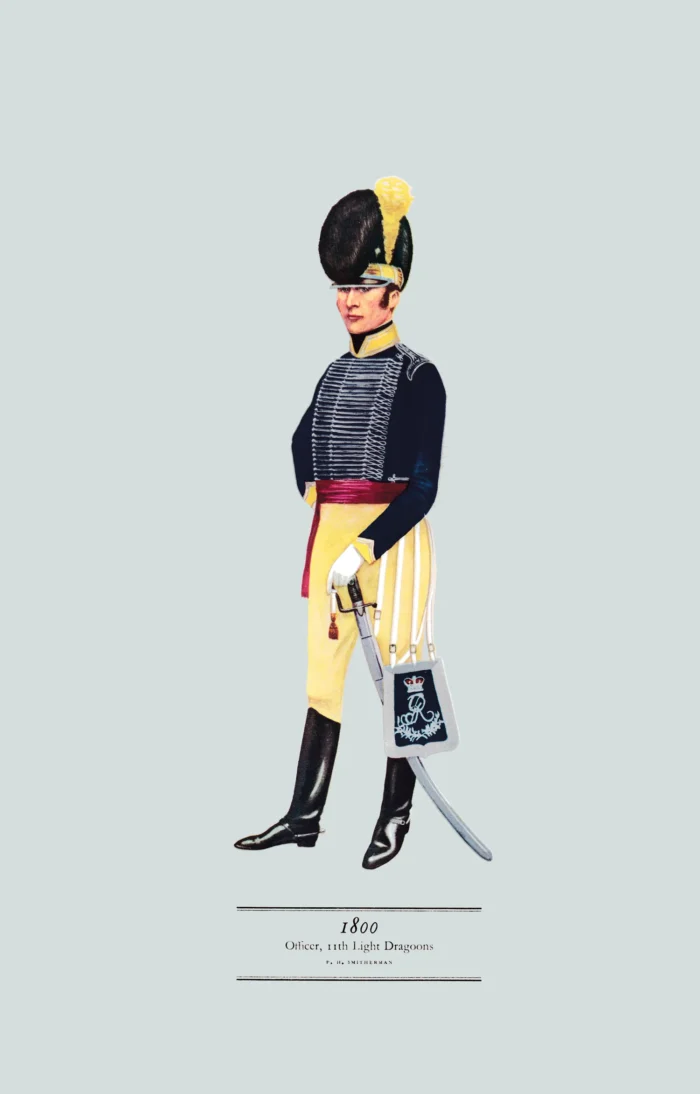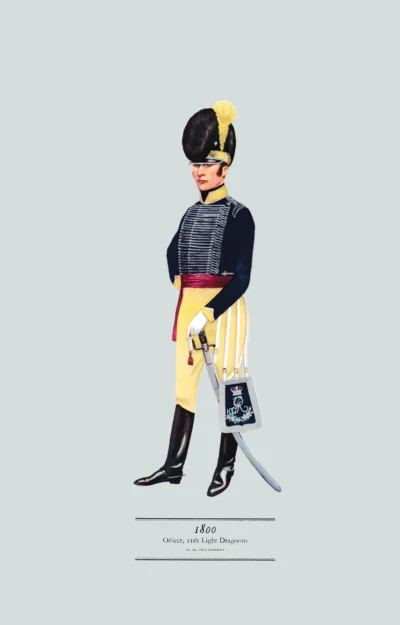Officer, 11th Light Dragoons, 1800 (Royal Hussars)
£12.00
Raised 1715; from 1751 11th Regiment of Dragoons; from 1969 The Royal Hussars (Prince of Wales’s Own); from1992 King’s Royal Hussars- KRH (scroll down for a more detailed Description)
Published 1962 by © Hugh Evelyn Limited; drawn by Colonel Philip Henry Smitherman (1910-1982), Royal Corps of Signals
Size: c. 24.5 x 37.5 cm [9 ½ ″ x 14 ½ ″] (may vary slightly from printers’ cut 50 years ago)
Printed on on medium cardstock weighing 144 g/sm2 faced in light greyish blue (RGB c. d5dede)
Print is STANDARD size – shipping is the same for 1 to 10 prints (based on largest print size in your order) – see Shipping & Returns.
In stock
Description
The 11th Hussars (Prince Albert’s Own) were raised in 1715 as Honeywood’s Dragoons. It saw service for three centuries including the First and Second World Wars. It amalgamated with the 10th to form the Royal Hussars in 1969 and amalgamated with the 14th/20th King’s Hussars to form the King’s Royal Hussars in 1992. The title ‘Prince Albert’s Own’ arose in 1840 when they provided the escort to the Prince on his arrival at Dover. They incorporated his crest and motto in their badge. This Light Dragoon officer is in parade dress – coat buttoned, waistcoat hidden and wearing plain breeches. The breeches are buff, the facing colour of the regiment also worn on collar and cuffs: regiments with a facing colour other than buff wore white breeches. The Light Dragoon helmet is of reinforced leather with peak and bearskin crest. A pagri is wound round it like a turban. A strap on the front bears the name of the regiment. The headgear was adopted by many volunteer regiments during the Napoleonic wars, and by the Royal Horse Artillery. The officer wears a sabretache. Starting as a small pouch hung over the sword, the front became more ornamented until the pouch became of little importance. Originally part of the Hungarian Hussars’ dress, it should have been confined to Hussars but was taken up by all, and later was worn by all mounted officers. The sabretaches of the Hussars and Royal Horse Artillery, who wore a uniform of a Hussar pattern, were more ornate than the rest of the cavalry. They disappeared in 1897, although they were retained by some yeomanry regiments after that date.
Additional information
| Weight | 0.0123 kg |
|---|---|
| Dimensions | 23 × 37 cm |





